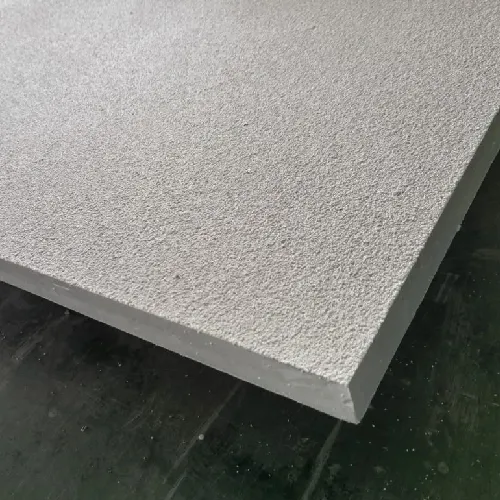loading...
- No. 9, Xingyuan South Street, Dongwaihuan Road, Zaoqiang County, Hengshui, Hebei, China
- admin@zjcomposites.com
- +86 15097380338
- Welcome to visit our website!
Current Trends and Cost Analysis in FRP Rebar Pricing for Construction Projects
Understanding the Price of FRP Rebar A Comprehensive Overview
Fiber-Reinforced Polymer (FRP) rebar has increasingly gained recognition in the construction and civil engineering sectors, particularly due to its unique properties that offer advantages over traditional steel reinforcement. The price of FRP rebar is influenced by a variety of factors, including material costs, manufacturing processes, market demand, and technological advancements. This article delves into these aspects to provide a clearer understanding of FRP rebar pricing.
What is FRP Rebar?
FRP rebar is a composite material made from a polymer matrix reinforced with fibers, typically glass, carbon, or aramid. It is designed to be used in concrete structures, enhancing their strength while reducing corrosion-related issues commonly associated with steel reinforcement. Its lightweight nature, high tensile strength, and non-corrosive properties make FRP rebar an attractive option for numerous applications, from bridges and highways to marine environments.
Factors Influencing FRP Rebar Prices
1. Raw Material Costs The primary materials used in producing FRP rebar, such as fiberglass or carbon fibers and the resin matrix, significantly influence its overall price. Variations in the pricing of these raw materials can lead to fluctuations in the cost of FRP rebar. For example, if the market experiences a spike in demand for fiberglass due to its use in a variety of industries, such as automotive or aerospace, the price of FRP rebar may rise accordingly.
2. Manufacturing Process The production techniques employed in the production of FRP rebar can also impact its pricing. Advanced manufacturing processes, including pultrusion or resin infusion methods, require specialized equipment and skilled labor, which can increase production costs. Additionally, innovations that improve the efficiency of these processes may, at times, lead to reduced costs in the long term.
3. Market Demand As more construction projects incorporate sustainable materials and practices, the demand for FRP rebar continues to grow. As infrastructure projects, particularly in coastal and high-moisture environments, increasingly adopt FRP solutions to mitigate corrosion, the heightened demand can lead to upward pressure on prices. Conversely, market saturation or reduced demand in specific regions may lead to price declines.
frp rebar price

4. Regulatory and Certification Costs The certification of materials used in construction is critical, and FRP rebar must comply with industry standards and regulations, which can impact availability and pricing. The costs associated with testing and obtaining certifications can be passed down to consumers, thus influencing the final price of FRP rebar.
5. Technological Advancements The field of composite materials is rapidly evolving, with ongoing research and development leading to the introduction of more efficient and cost-effective products. As manufacturers innovate and improve the quality and durability of their FRP rebar offerings, competitive pricing may emerge, ultimately benefiting consumers.
The Competitive Landscape
The FRP rebar market comprises numerous manufacturers, ranging from large corporations to specialized local firms. As competition within the industry intensifies, price wars may ensue, leading to potential cost reductions for end users. However, quality remains a critical factor, and lower prices should not come at the expense of performance or safety. It is essential for buyers to weigh both price and product quality when choosing FRP rebar for their projects.
Future Outlook
As the global construction industry increasingly adopts sustainable practices and seeks alternatives to steel reinforcement due to its vulnerability to corrosion, the demand for FRP rebar is expected to rise. Consequently, prices may stabilize or even decrease with advancements in technology and economies of scale. Investors and stakeholders in the construction sector should remain informed about the evolving landscape of FRP rebar pricing to make strategic decisions in their procurement processes.
In conclusion, while the price of FRP rebar is influenced by a myriad of factors, its potential benefits in terms of performance and longevity continue to make it an appealing choice for modern construction projects. As the market grows, understanding these pricing dynamics becomes essential for effective project planning and budgeting.
-
Transform Your Spaces with FRP Grating SolutionsNewsNov.04,2024
-
The Versatility and Strength of FRP RodsNewsNov.04,2024
-
The Excellence of Fiberglass Water TanksNewsNov.04,2024
-
The Benefits of FRP Grating for Your ProjectsNewsNov.04,2024
-
Elevate Your Efficiency with FRP Pressure VesselsNewsNov.04,2024
-
Welcome to the World of FRP Pressure VesselsNewsOct.12,2024
-
Unveiling the Future of Filtration: Why FRP Filter Vessels are a Game ChangerNewsOct.12,2024
